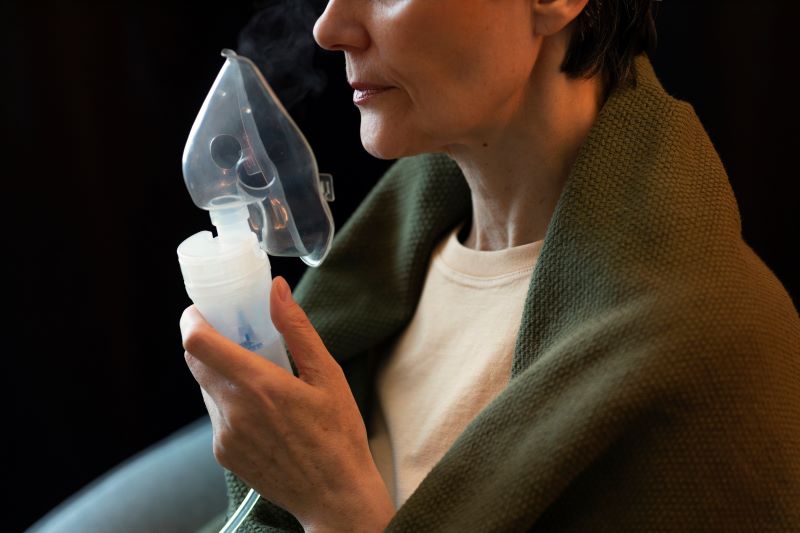Two key criteria must be met when using breath alcohol testing equipment, also known as evidential breath testers (or EBTs), to capture a breath sample.
- First, the test subject must provide a minimum volume of breath. (Between 1200 ccs and 1300 ccs, depending on the device being used.)
- Second, the sensor must detect a breath flow drop-off point. The most accurate and representative portion of a person’s blood alcohol content is at the very end of their exhalation, which we call the deep lung breath. EBTs with automatic breath sampling are designed to sense when a person is nearing the end of their breath and grab an optimum sample at that moment. This means that the device must detect when the breath flow is dropping off.
If the test subject cannot meet either of these criteria– if they don’t blow sufficient air into the device or the device cannot detect a drop-off point–we call this an “insufficient breath sample” or, more informally, “shy lung.” Here are the main reasons you might encounter shy lung in your testing and what you can do to ensure you get a usable sample.
1. The Subject Received Poor Instructions
The most common reason testers don’t get sufficient breath samples is because they don’t give enough information or give improper instructions to the test subject. In breath alcohol technician training, student technicians will sometimes instruct their test subjects to “blow long and hard” into the device. While that seems clear, those instructions can cause problems. If the subject blows too hard right away, the EBT will give an error message, and even if the device registers, the subject will run out of breath before reaching that all-important drop-off point.
The best instruction you can give your subject is to take a deep breath, hold their breath for one second, and then blow long and steady until you tell them to stop. Before administering the test, ask them if they understood the instructions. If they still aren’t sure, use a mouthpiece to demonstrate for them.
2. The Subject is Anxious
If the subject is unfamiliar with the testing process or nervous about the outcome, they may have a hard time providing a good breath sample. Take the time to carefully explain the process and demonstrate it to them with a mouthpiece. Answer any questions they might have and alleviate their concerns where possible. Many subjects inaccurately believe that the test results can be tainted by things such as what they ate for breakfast or by the nitrogen from an airbag deploying. It is helpful if you explain how the sensors work and that those kinds of false positives won’t happen.
If you still can’t get the subject to give a good breath sample, try taking a manual sample. The sensors have the ability for you to manually capture a breath sample, and a manual sample is preferable to a “void sample” or “insufficient sample.” Continue giving good instructions to the test subject, and with each try, pay attention to when you see their breath drop off. Try to capture a manual sample at that moment.
3. There is a Problem with the Mouthpiece
The reason the subject can’t get enough air into the sensor may be because plastic is blocking the mouthpiece. If you remove the mouthpiece from the packaging by pushing it through instead of tearing the package open, it might bend the mouthpiece or push plastic inside, making it unusable. Make sure you always open the package carefully, and if you can’t get a good breath sample, check to see if the mouthpiece is functional.
4. The Subject is Giving a Poor Sample on Purpose
If you suspect that the subject is intentionally failing to give a sufficient breath sample or “faking it,” continue to give clear instructions and demonstrations, and then take a manual sample. The EBT will give you three tries to capture a manual sample before giving you a “void” error. When you feel that the subject has reached a breath drop-off point, pull the trigger to activate the manual breath capture.
5. The Subject has a Legitimate Medical Condition
The designated employee representative (DER) should let you know if the subject has a known medical condition and request that a manual sample be taken. However, there will be times that the DER doesn’t let you know beforehand or that an employer was not aware of a subject’s medical condition. As a breath alcohol technician, you are empowered by the DOT to take a manual sample any time you deem it necessary. Continue to give clear instructions and attempt to get a sufficient sample.
Capturing a successful automatic sample is always preferred, but if getting an automated sample isn’t working, a manual sample is always better than an “insufficient sample” or an error code. If you know the common reasons for “shy lung,” you’ll be better prepared to deal with the obstacles you might face.






